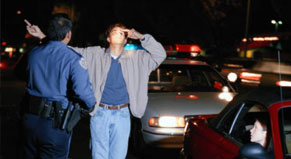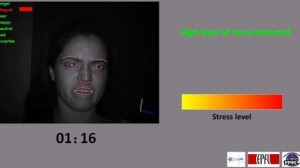Driving Technology: The Latest and Craziest Advancements to Assist Drivers Around the World
Driving technology is one sphere that has taken giant leaps forward in an alarmingly short span of time. It is thought that all new cars will be hooked up to the internet by the end of 2014 and the biggest technology companies are battling it out for supremacy by developing the best and brightest apps and gadgets that make that morning commute a little bit easier. So it shouldn’t be long before we’re all being chauffeured around by driverless vehicles right? Well let’s take a look at the most recent developments that make us feel like we’re in a sci-fi B movie.
Sober Steering
A Canadian company has developed technology that allows a car’s steering wheel to be installed with subtle biosensors that can detect if a driver has been drinking, simply through the touch of a hand on the wheel. If the driver’s blood alcohol level is above a pre-set limit, the vehicle is immobilized. The system is completely invisible to passengers and testing takes just a few seconds. It also carries out randomized rolling retests while driving, indicated by audible and/or visual signals, so there is no need to pull over for retesting.
Drink driving is the number 1 killer of people under 25 and has a dramatic and potentially devastating impact on road users each year. It is responsible for 1 in 6 of all UK road deaths in 2012, so it seems like Sober Steering are really onto a potentially life-saving piece of technology here . It would certainly pay for companies that rely on sober drivers, such as delivery firms, taxi and coach companies and bus drivers, to invest in this kind of technology to ensure their drivers are always following the letter of the law when it comes to drink driving but the applications for this kind of technology seem endless.
At the moment, the Ontario based company are producing custom products on request for school buses, fleet vehicles, young drivers and convicted DUI drivers but their prediction that it will soon be a legal requirement in all motor vehicles, like seatbelts and airbags, seems like an admirable and, more importantly, a realistic goal.
For more info on this ingenious piece of technology, visit the company’s website here: sobersteering.com
In-car Camera to Detect Angry/Fatigue
We’ve all been subject to a little road rage at times. It can be highly frustrating and incredibly distracting but how does it really affect our driving? A team of scientists in Switzerland are conducting extensive research into how our emotional state impairs our driving ability. They have planted a camera in the steering wheel of a Peugeot Citroen that employs facial expression recognition technology to detect the driver’s emotions.
So far, they have managed to detect anger and disgust in the face of their test subjects and have determined that irritated drivers act more aggressively and less attentively which means their research could have a serious impact on road safety. However, the application for this kind of technology has not been outlined and the Swiss team have made it clear that it is far from ready to be used in a real driving scenario.
It would be slightly worrying if they planned to apply this science in the same way Sober Steering uses theirs and immobilized the vehicle when the driver became unsafely aggressive given that it is based on far more subjective data. But maybe their research could just be used to raise awareness about the importance of remaining calm and attentive when behind the wheel.
Smartphone App That Can Park Your Car
Ok so we don’t have driverless cars yet. But last month, at the Consumer Electronics Show in Las Vegas, Bosch unveiled a smart phone app that can conquer tricky parking manoeuvres. The technology works by utilising a dozen sensors on the car to scan the available space then either reverse into a bay or parallel park the car. The driver can either stay in the vehicle or park the car from the pavement. But don’t take my word for it. Check out the video and see it for yourself. The app is supposedly going to be available for consumers from next year. Bosch are also working on technology that will engage a vehicle’s brakes automatically when it detects a pedestrian or obstruction in the road in case the driver isn’t paying attention. But that’s nothing compared to the next development we’re going to look at…
Vehicle to Vehicle Comms that Increase Driver Safety
Car Manufacturers, led by Ford, are coordinating their efforts to develop a vehicle to vehicle communication system that will utilise modified Wi-Fi technology to broadcast unseen potential hazards to vehicles several hundred meters away. The basic concept is that cars installed with this system will all be aware of each other and will consistently broadcast data detailing speed, position and direction of travel. So when one vehicle goes to run a red light, for example, approaching cars at that junction would be alerted to this car’s dangerous actions.
It would rely on a critical number of cars on the road being installed with this technology before it became effective and there are still massive hurdles to overcome, such as ensuring the broadcasted data is accurate and still remains anonymous but the potential for phenomenal life-saving technology here is huge. They have not discussed taking it further like, for example, automatically engaging brakes when approaching hazards but the safety implications for this kind of technology could definitely be huge!
These are just a few of the most radical changes hitting our roads in the near future but there is a lot going on right now for the driving tech community. Have you guys heard of anything else that will blow our minds? What are your thoughts on these advancements? Do you think it’s getting to be too much? Let us know by sharing your thoughts in the comments section below.




